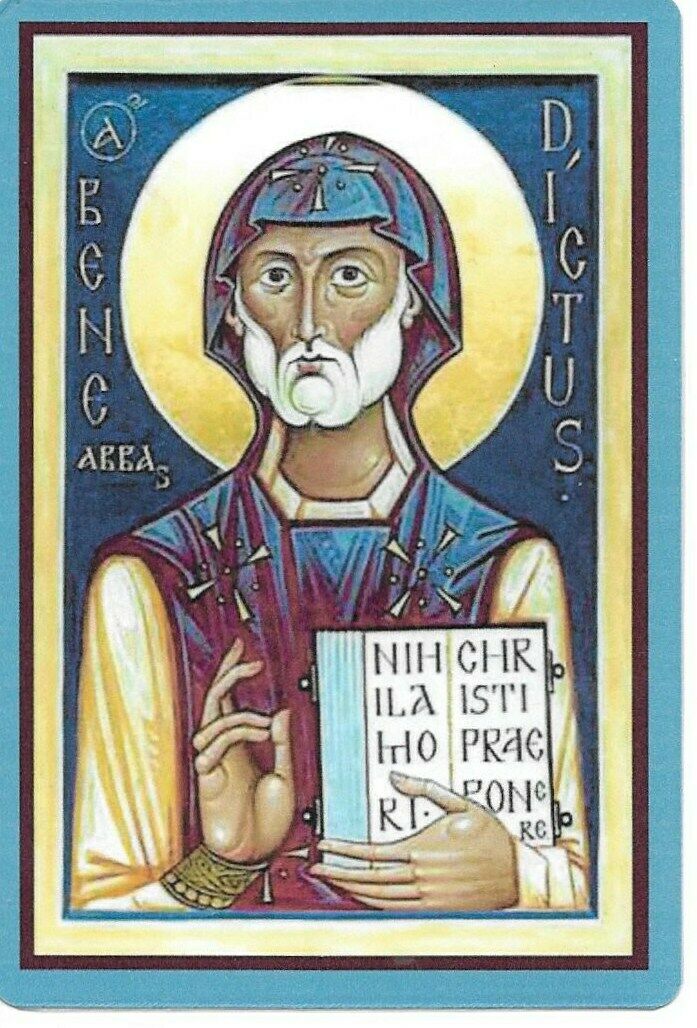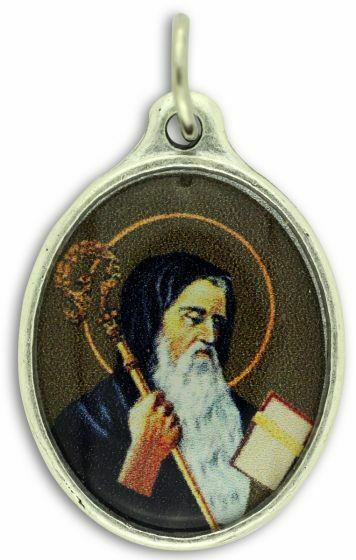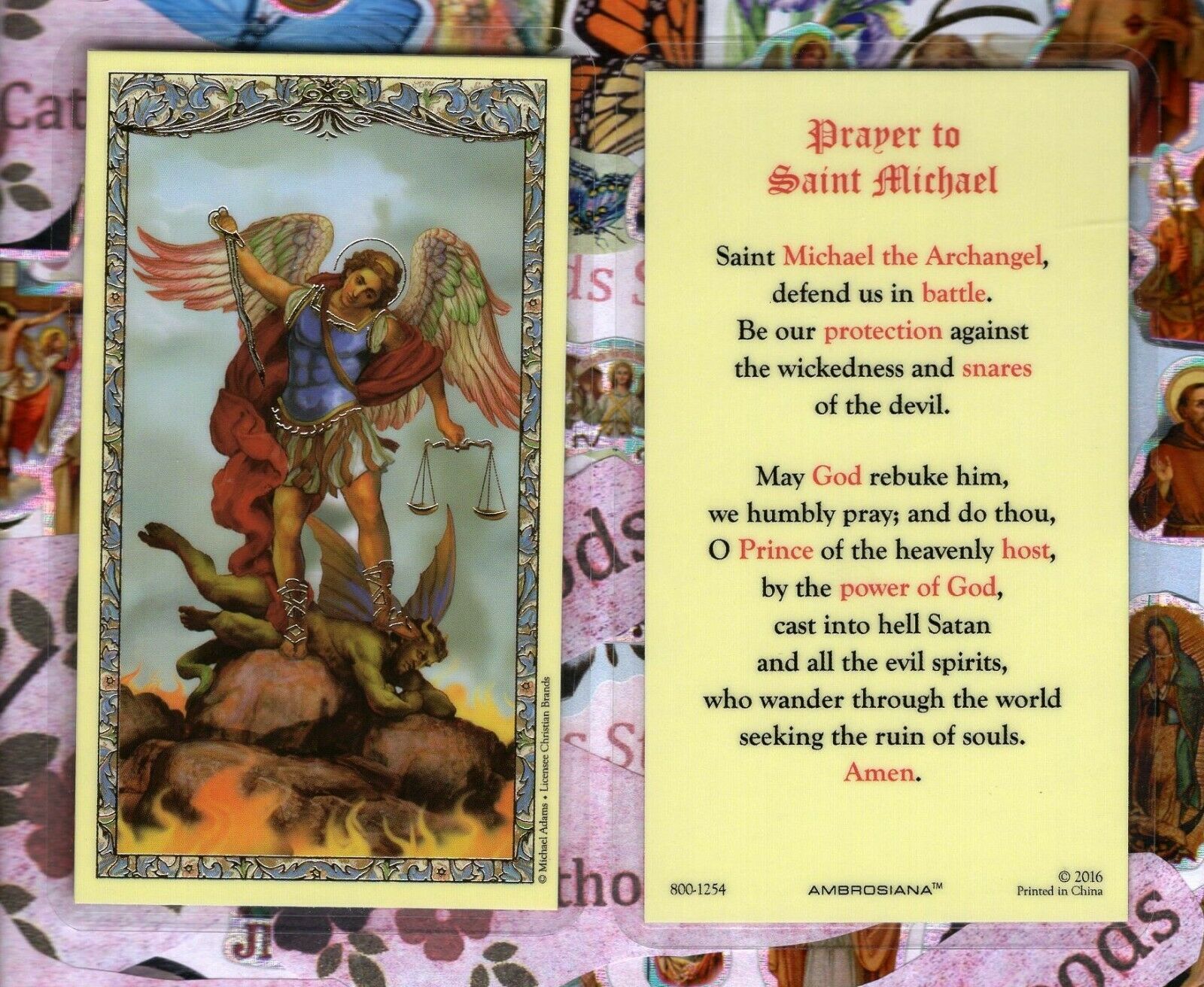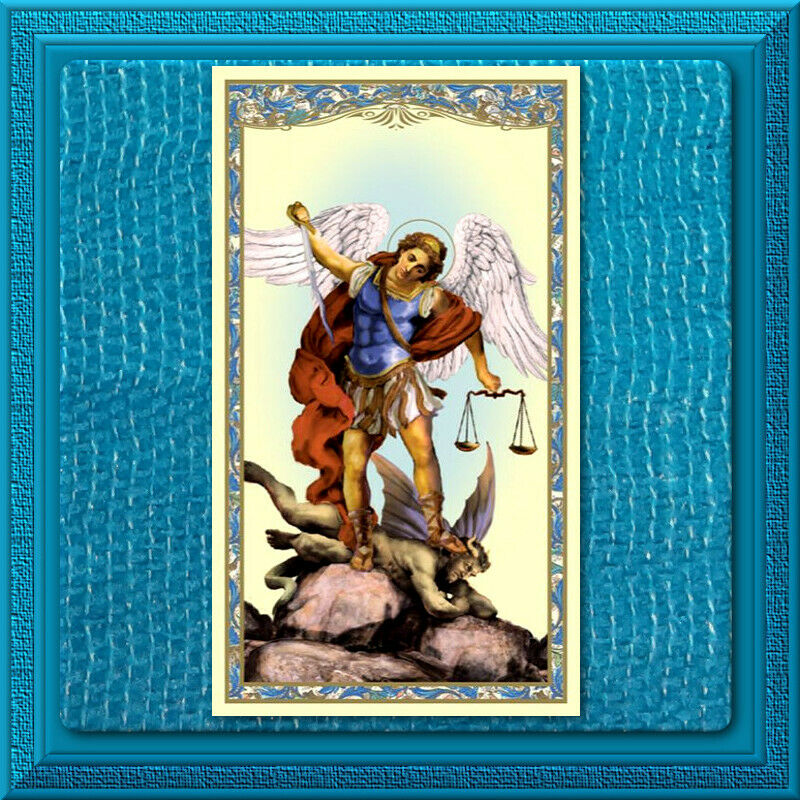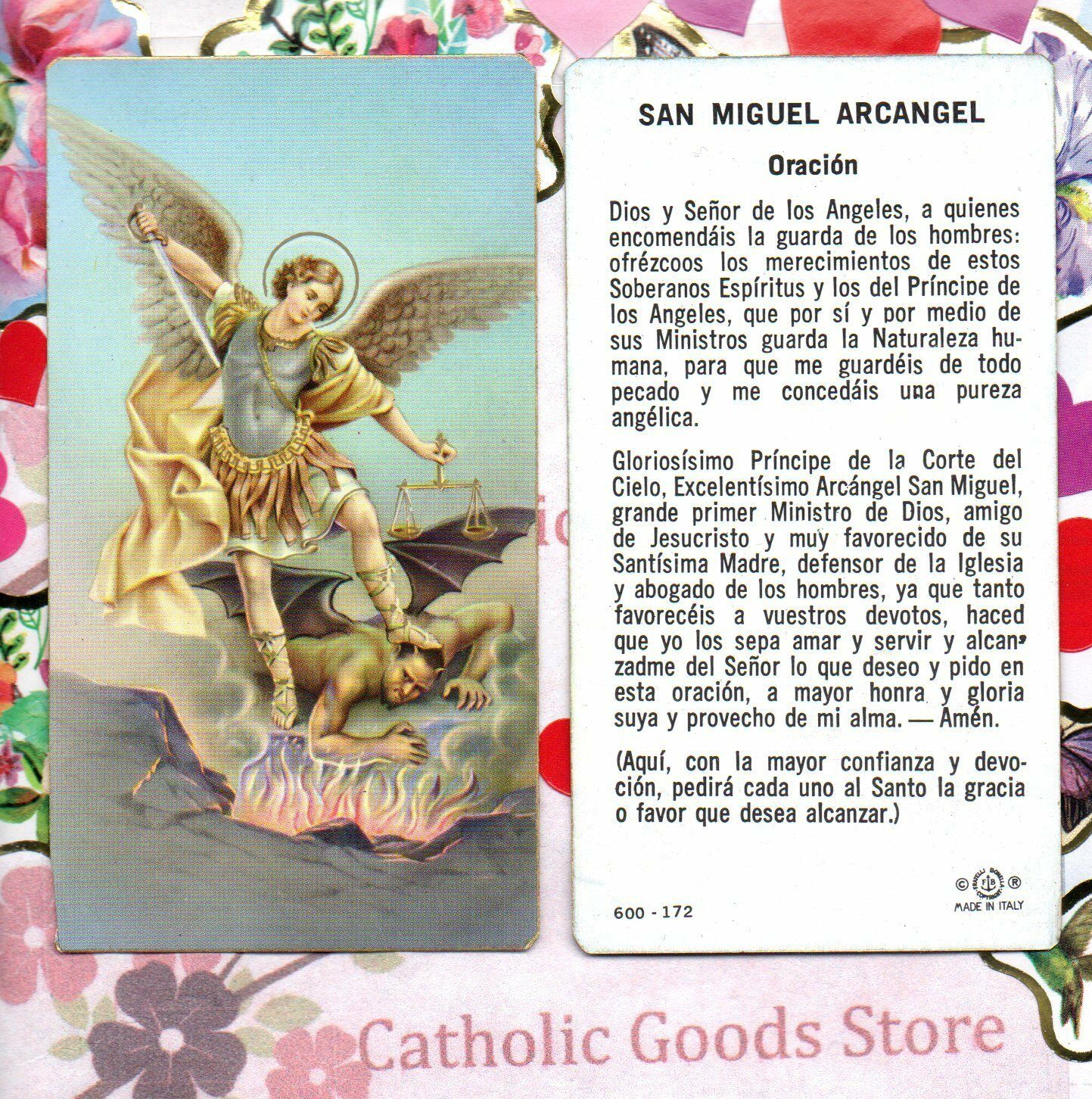-40%
Holy Card of Saint Benedict of Nursia Plus a 1" Colored Medal of Benedict
$ 2.77
- Description
- Size Guide
Description
Laminated Holy Card of Saint Benedict of Nursia Plus a 1" Colored Medal of BenedictThis is an exceptionally detailed color Image, die-cast medal with St Benedict on one side and the seal on the other. It is made in the region of Italy that produces the finest quality medals in the world. The silver oxidized finish is has been perfected for hundreds of years by the local Italian craftsmen, and remains unmatched in quality, beauty, and longevity throughout the world - a genuine silver plating with a 3-dimensional depth, and long-lasting brilliance. Measures approximately 1" in height - attached jump ring is included.
Benedict of Nursia is a Christian saint venerated in the Catholic Church, the Eastern Orthodox Church, the Oriental Orthodox Churches, the Anglican Communion and Old Catholic Churches. He is a patron saint of Europe.
Benedict founded twelve communities for monks at Subiaco, Lazio, Italy to the east of Rome), before moving to Monte Cassino in the mountains of southern Italy. The Order of Saint Benedict is of later origin and, moreover, not an "order" as commonly understood but merely a confederation of autonomous congregations.
Benedict's main achievement, his "Rule of Saint Benedict", contains a set of rules for his monks to follow. Heavily influenced by the writings of John Cassian, it shows strong affinity with the Rule of the Master, but it also has a unique spirit of balance, moderation and reasonableness, which persuaded most Christian religious communities founded throughout the Middle Ages to adopt it. As a result, his Rule became one of the most influential religious rules in Western Christendom. For this reason, Giuseppe Carletti regarded Benedict as the founder of Western Christian monasticism.
Apart from a short poem attributed to Mark of Monte Cassino, the only ancient account of Benedict is found in the second volume of Pope Gregory I's four-book Dialogues, thought to have been written in 593, although the authenticity of this work has been disputed.
Gregory's account of Benedict's life is not, however, a biography in the modern sense of the word. It provides instead a spiritual portrait of the gentle, disciplined abbot. In a letter to Bishop Maximilian of Syracuse, Gregory states his intention for his Dialogues, saying they are a kind of floretum (an anthology, literally, 'flowers') of the most striking miracles of Italian holy men.
Gregory did not set out to write a chronological, historically anchored story of Benedict, but he did base his anecdotes on direct testimony. To establish his authority, Gregory explains that his information came from what he considered the best sources: a handful of Benedict's disciples who lived with him and witnessed his various miracles. These followers, he says, are Constantinus, who succeeded Benedict as Abbot of Monte Cassino, Honoratus, who was abbot of Subiaco when St Gregory wrote his Dialogues, Valentinianus, and Simplicius.
In Gregory's day, history was not recognised as an independent field of study; it was a branch of grammar or rhetoric, and historia was an account that summed up the findings of the learned when they wrote what was, at that time, considered 'history.' Gregory's Dialogues Book Two, then, an authentic medieval hagiography cast as a conversation between the Pope and his deacon Peter, is designed to teach spiritual lessons.
SAINT BENEDICT MEDAL
This devotional medal originally came from a cross in honour of Saint Benedict. On one side, the medal has an image of Saint Benedict, holding the Holy Rule in his left hand and a cross in his right. There is a raven on one side of him, with a cup on the other side of him. Around the medal's outer margin are the words "Eius in obitu nostro praesentia muniamur" ("May we be strengthened by his presence in the hour of our death"). The other side of the medal has a cross with the initials CSSML on the vertical bar which signify "Crux Sacra Sit Mihi Lux" ("May the Holy Cross be my light") and on the horizontal bar are the initials NDSMD which stand for "Non Draco Sit Mihi Dux" ("Let not the dragon be my guide"). The initials CSPB stand for "Crux Sancti Patris Benedicti" ("The Cross of the Holy Father Benedict") and are located on the interior angles of the cross. Either the inscription "PAX" (Peace) or the Christogram "IHS" may be found at the top of the cross in most cases. Around the medal's margin on this side are the Vade Retro Satana initials VRSNSMV which stand for "Vade Retro Satana, Nonquam Suade Mihi Vana" ("Begone Satan, do not suggest to me thy vanities") then a space followed by the initials SMQLIVB which signify "Sunt Mala Quae Libas, Ipse Venena Bibas" ("Evil are the things thou profferest, drink thou thy own poison").
This medal was first struck in 1880 to commemorate the fourteenth centenary of Benedict's birth and is also called the Jubilee Medal; its exact origin, however, is unknown. In 1647, during a witchcraft trial at Natternberg near Metten Abbey in Bavaria, the accused women testified they had no power over Metten, which was under the protection of the cross. An investigation found a number of painted crosses on the walls of the abbey with the letters now found on St Benedict medals, but their meaning had been forgotten. A manuscript written in 1415 was eventually found that had a picture of Benedict holding a scroll in one hand and a staff which ended in a cross in the other. On the scroll and staff were written the full words of the initials contained on the crosses. Medals then began to be struck in Germany, which then spread throughout Europe. This medal was first approved by Pope Benedict XIV in his briefs of 23 December 1741 and 12 March 1742.
Benedict has been also the motive of many collector's coins around the world. The Austria 50 euro 'The Christian Religious Orders', issued on 13 March 2002 is one of them.
